Simplistic, Efficient, and Low-Cost Crack Detection of Dielectric Materials Based on Millimeter-Wave Interference
Abstract
:1. Introduction
2. Theory
2.1. Wave Propagation Model
2.2. Theoretical Derivation of Combining Efficiency
3. Simulation Validation
4. Experimental Validation
4.1. Measurement System
4.2. Samples under Test
4.3. Measurement Result
5. Conclusions
- (1)
- Under specific conditions, this method can detect cracks that make the signal phase change more than 1.2°, corresponding to a combining efficiency difference of more than 1%.
- (2)
- The sensitivity of the system can be improved by changing the operating frequency or the antenna spacing.
- (3)
- The experimental system developed using this method has a system error of less than 1% when testing the same sample. In addition, the system exhibits good stability and reproducibility.
- (4)
- For PTFE materials with a thickness of 5 mm and a permittivity of 2.55, each 1 mm difference in the crack width corresponds to a combining efficiency difference of ~4%. Cracks with a width of ~0.4 mm, which is ~0.07 λg, can be detected at 35 GHz.
Author Contributions
Funding
Data Availability Statement
Conflicts of Interest
References
- Amineh, R.K.; Ravan, M.; Sharma, R. Nondestructive Testing of Nonmetallic Pipes Using Wideband Microwave Measurements. IEEE Trans. Microwave Theory Tech. 2020, 68, 1763–1772. [Google Scholar] [CrossRef]
- Song, G.R.; Yan, T.T.; He, C.F.; Yang, S.; Lu, Y.; Wu, B. Detection of surface crack on the substrate under thermal barrier coatings using microwave non-destructive evaluation. J. Microwave Power. 2015, 49, 69–75. [Google Scholar]
- Ciampa, F.; Mahmoodi, P.; Pinto, F.; Meo, M. Recent advances in active infrared thermography for non-destructive testing of aerospace components. Sensors 2018, 18, 609. [Google Scholar] [CrossRef] [Green Version]
- Wang, Z.; Tian, G.Y.; Meo, M.; Ciampa, F. Image processing based quantitative damage evaluation in composites with long pulse thermography. NDT&E Int. 2018, 99, 93–104. [Google Scholar]
- Bastianini, F.; Tommaso, D.A.; Pascale, G. Ultrasonic non-destructive assessment of bonding defects in composite structural strengthenings. Compos. Struct. 2001, 53, 3–7. [Google Scholar]
- Garcea, S.C.; Wang, Y.; Withers, P.J. X-ray computed tomography of polymer composites. Compos. Sci. Technol. 2018, 156, 5–19. [Google Scholar] [CrossRef]
- Schilling, P.J.; Karedla, B.R.; Tatiparthi, A.K.; Verges, M.A.; Herrington, P.D. X-ray computed microtomography of internal damage in fiber reinforced polymer matrix composites. Compos. Sci. Technol. 2005, 65, 1–8. [Google Scholar] [CrossRef]
- Tsukada, K.; Hayashi, M.; Nakamura, Y.; Sakai, K.; Kiwa, T. Small Eddy Current Testing Sensor Probe Using a Tunneling Magnetoresistance Sensor to Detect Cracks in Steel Structures. IEEE Trans. Magn. 2018, 54, 1–5. [Google Scholar] [CrossRef]
- Duchene, P.; Chaki, S.; Ayadi, A.; Krawczak, P. A review of non-destructive techniques used for mechanical damage assessment in polymer composites. J. Mater. Sci. 2018, 53, 7915–7938. [Google Scholar] [CrossRef]
- Zhang, H.; Yang, R.; He, Y.; Foudazi, A.; Cheng, L.; Tian, G. A Review of Microwave Thermography Nondestructive Testing and Evaluation. Sensors 2017, 17, 1123. [Google Scholar] [CrossRef]
- Liu, L. Application of Microwave for Remote NDT and Distinction of Biofouling and Wall Thinning Defects Inside a Metal Pipe. J. Nondestruct. Eval. 2015, 34, 40. [Google Scholar] [CrossRef]
- Sutthaweekul, R.; Tian, G.Y.; Wang, Z.J.; Ciampa, F. Microwave open-ended waveguide for detection and characterisation of FBHs in coated GFRP pipes. Compos. Struct. 2019, 225, 111080. [Google Scholar] [CrossRef]
- Shrifan, N.H.M.M.; Akbar, M.F.; Isa, N.A.M. Prospect of Using Artificial Intelligence for Microwave Nondestructive Testing Technique: A Review. IEEE Access 2019, 7, 110628–110650. [Google Scholar] [CrossRef]
- Shrifan, N.H.M.M.; Jawad, G.N.; Isa, N.A.M.; Akbar, M.F. Microwave Nondestructive Testing for Defect Detection in Composites Based on K-Means Clustering Algorithm. IEEE Access 2021, 9, 4820–4828. [Google Scholar] [CrossRef]
- Chizh, M.; Zhuravlev, A.; Razevig, V.; Ivashov, S.; Falorni, P.; Capineri, L. Defects investigation in thermal insulation coatings with microwave imaging based on a 22 GHz holographic radar. NDT&E Int. 2020, 109, 102191. [Google Scholar]
- Arbaoui, A.; Ouahabi, A.; Jacques, S.; Hamiane, M. Concrete Cracks "Detection and Monitoring Using Deep Learning-Based Multiresolution Analysis. Electronics 2021, 10, 1772. [Google Scholar] [CrossRef]
- Rahman, M.S.; Haryono, A.; Abou-Khousa, M.A. Microwave Non-destructive Evaluation of Glass Reinforced Epoxy and High-Density Polyethylene Pipes. J. Nondestruct. Eval. 2020, 39, 26. [Google Scholar] [CrossRef]
- Shirai, H.; Sekiguchi, H. A simple crack depth estimation method from backscattering response. IEEE Trans. Instrum. Meas. 2004, 53, 1249–1254. [Google Scholar] [CrossRef]
- Roqueta, G.; Jofre, L.; Feng, M.Q. Analysis of the Electromagnetic Signature of Reinforced Concrete Structures for Nondestructive Evaluation of Corrosion Damage. IEEE Trans. Instrum. Meas. 2012, 61, 1090–1098. [Google Scholar] [CrossRef] [Green Version]
- Kharkovsky, S.; McClanahan, A.; Zoughi, R.; Palmer, D.D. Microwave Dielectric-Loaded Rectangular Waveguide Resonator for Depth Evaluation of Shallow Flaws in Metals. IEEE Trans. Instrum. Meas. 2011, 60, 3923–3930. [Google Scholar] [CrossRef]
- Zoughi, R.; Gallion, J.R.; Ghasr, M.T. Accurate Microwave Measurement of Coating Thickness on Carbon Composite Substrates. IEEE Trans. Instrum. Meas. 2016, 65, 951–953. [Google Scholar] [CrossRef]
- Gal, B.; Nowak, D. Nondestructive, Microwave Testing of Compression Strength and Moisture Content of Green Molding Sands. J. Nondestruct. Eval. 2021, 40, 86. [Google Scholar] [CrossRef]
- Gao, Y.; Ravan, M.; Amineh, K.R. Fast, Robust, and Low-Cost Microwave Imaging of Multiple Non-Metallic Pipes. Electronics 2021, 10, 1762. [Google Scholar] [CrossRef]
- Wu, H.; Amineh, R.K. A Low-Cost and Compact Three-Dimensional Microwave Holographic Imaging System. Electronics 2019, 8, 1036. [Google Scholar] [CrossRef] [Green Version]
- Chen, G.; Katagiri, T.; Song, H.; Yusa, N.; Hashizume, H. Detection of cracks with arbitrary orientations in a metal pipe using linearly-polarized circular TE11 mode microwaves. NDT&E Int. 2019, 107, 102125. [Google Scholar]
- Li, W.; Li, Y.; Tan, J.; Abidin IM, Z.; Hu, J.; Chen, Z.; Wu, Y. A Millimetre-wave Probe for Fast Screening and Evaluation of Corrosion in Planar Conductors: Numerical Simulations. IOP Conf. Ser. Mater. Sci. Eng. 2019, 554, 012003. [Google Scholar] [CrossRef]
- Nazarchuk, Z.T.; Dzhala, V.R.; Synyavs’kyi, A.T. Detection of Subsurface Inhomogeneities in Dielectric Materials by the Microwave method. Mater. Sci. 2014, 49, 425–441. [Google Scholar] [CrossRef]
- McClanahan, A.; Kharkovsky, S.; Maxon, A.R.; Zoughi, R.; Palmer, D.D., Jr. Depth Evaluation of Shallow Surface Cracks in Metals Using Rectangular Waveguides at Millimeter-Wave Frequencies Depth Evaluation of Shallow Surface Cracks. IEEE Trans. Instrum. Meas. 2010, 59, 1693–1704. [Google Scholar] [CrossRef]
- Mukherjee, S.; Tamburrino, A.; Haq, M.; Udpa, S.; Udpa, L. Far field microwave NDE of composite structures using time reversal mirror. NDT&E Int. 2018, 93, 7–17. [Google Scholar]
- Arunachalam, K.; Melapudi, V.R.; Udpa, L.; Udpa, S.S. Microwave NDT of cement-based materials using far-field reflection coefficients. NDT&E Int. 2006, 39, 585–593. [Google Scholar]
- Gupta, M.S. Power Combined Efficiency and its Optimization. IEE Proc. Part H Microwaves Opt. Antennas. 1992, 139, 233–238. [Google Scholar] [CrossRef]
- Yassin, A.; Rahman, M.S.U.; Abou-Khousa, M.A. Imaging of Near-Surface Defects using Microwaves and Ultrasonic Phased Array Techniques. J. Nondestruct. Eval. 2018, 37, 71. [Google Scholar] [CrossRef]
- Chen, G.; Katagiri, T.; Song, H.; Yusa, N.; Hashizume, H. Investigation of the effect of a bend on pipe inspection using microwave NDT. NDT&E Int. 2020, 110, 102208. [Google Scholar]
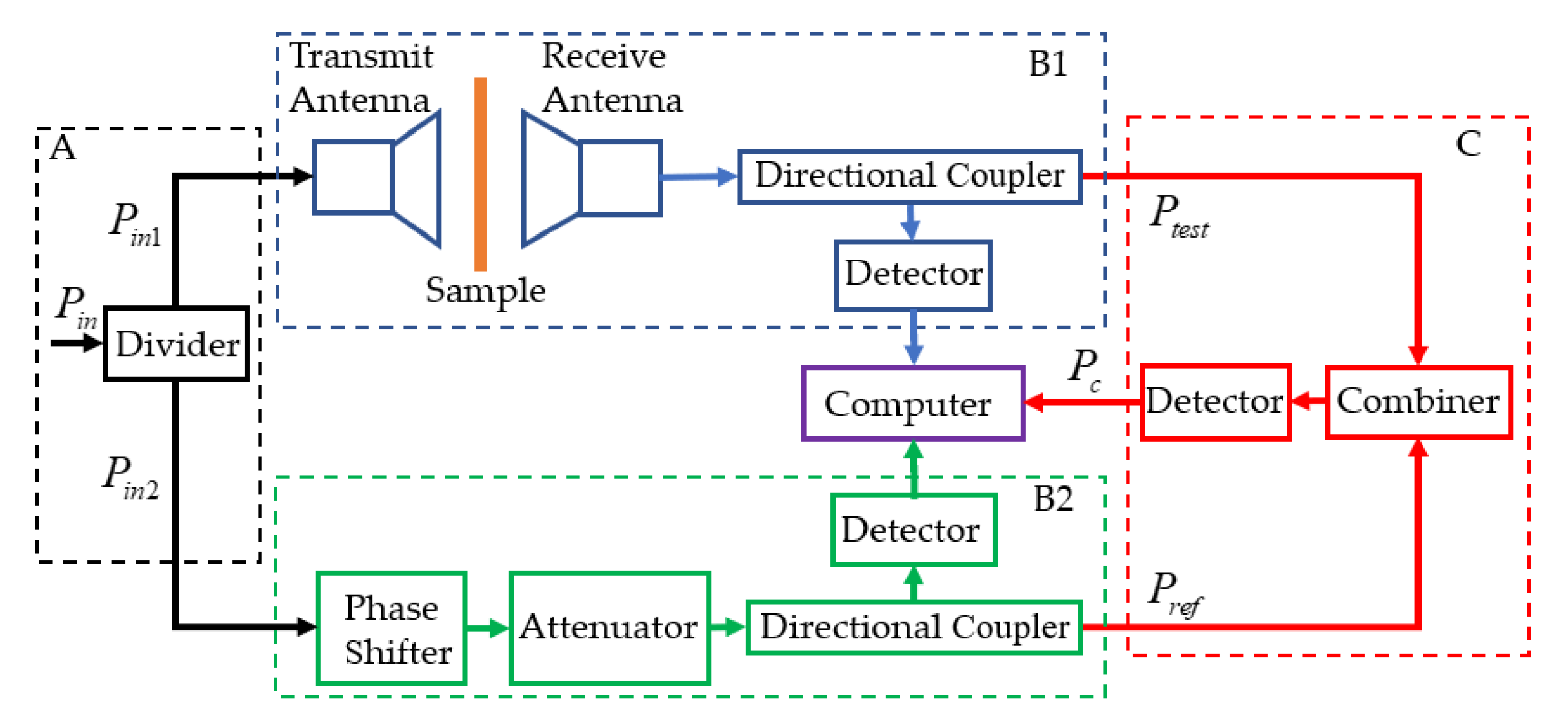

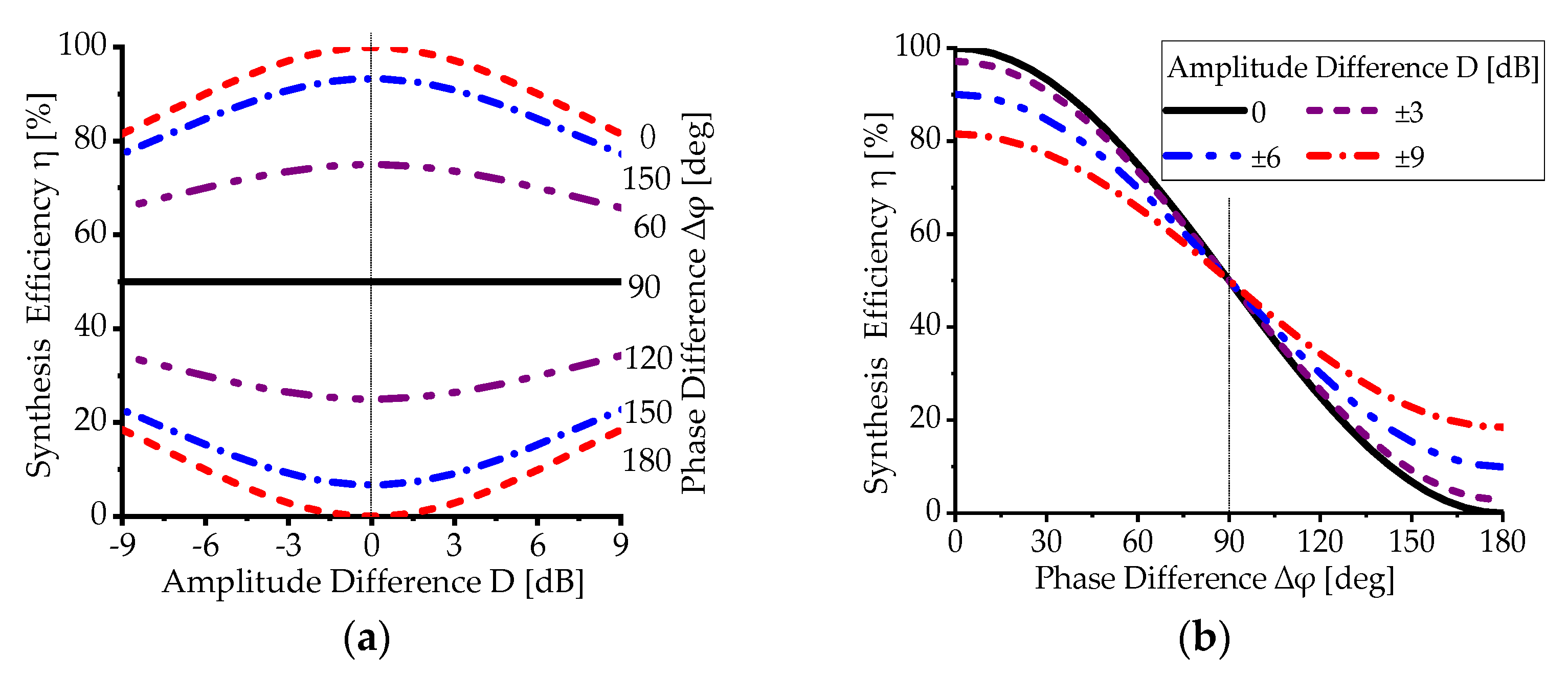
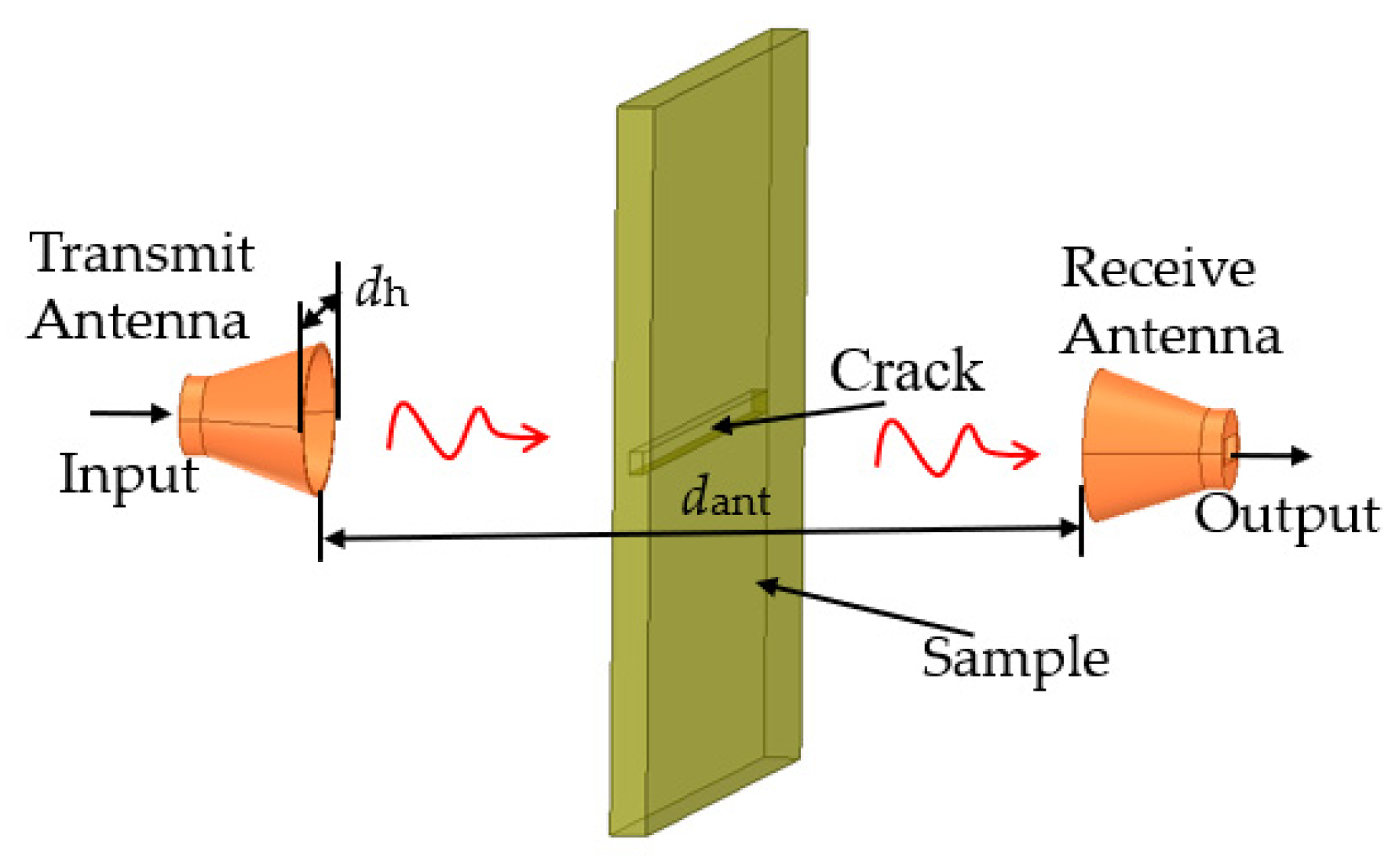


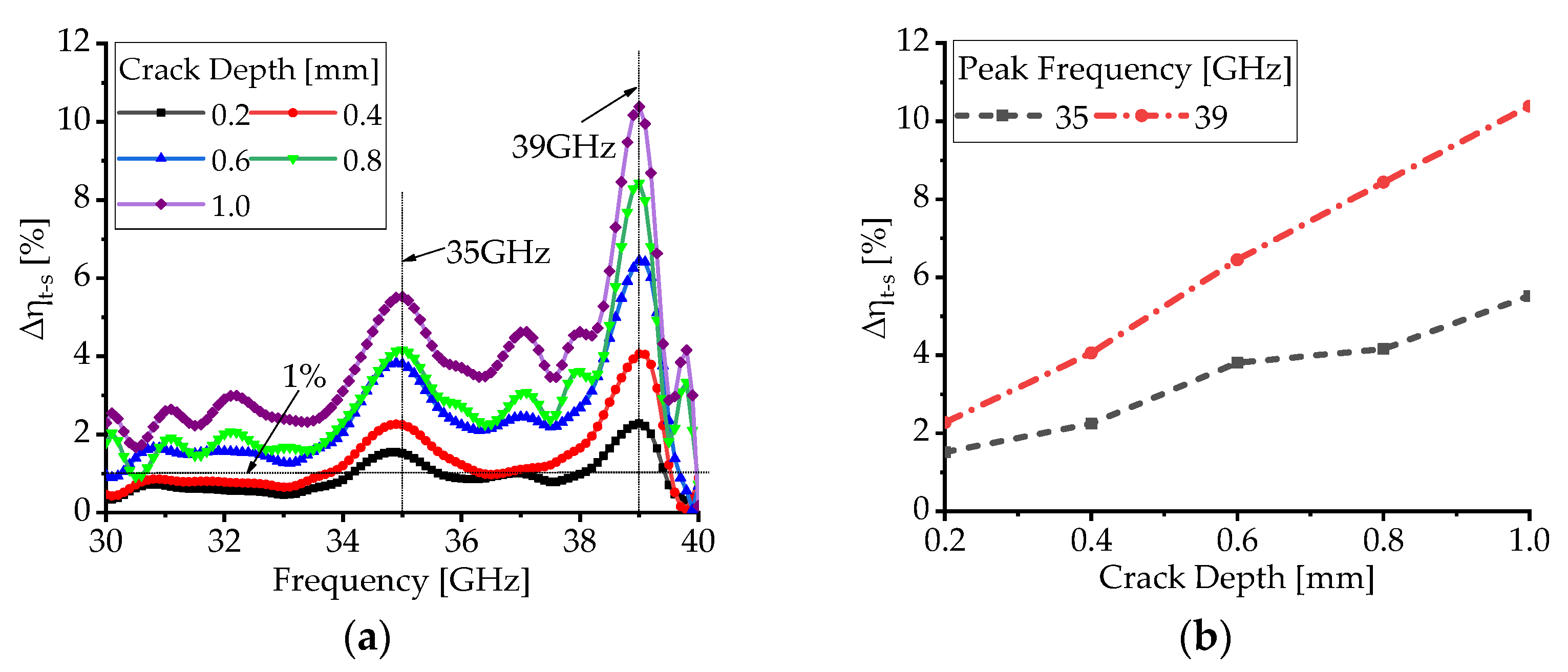
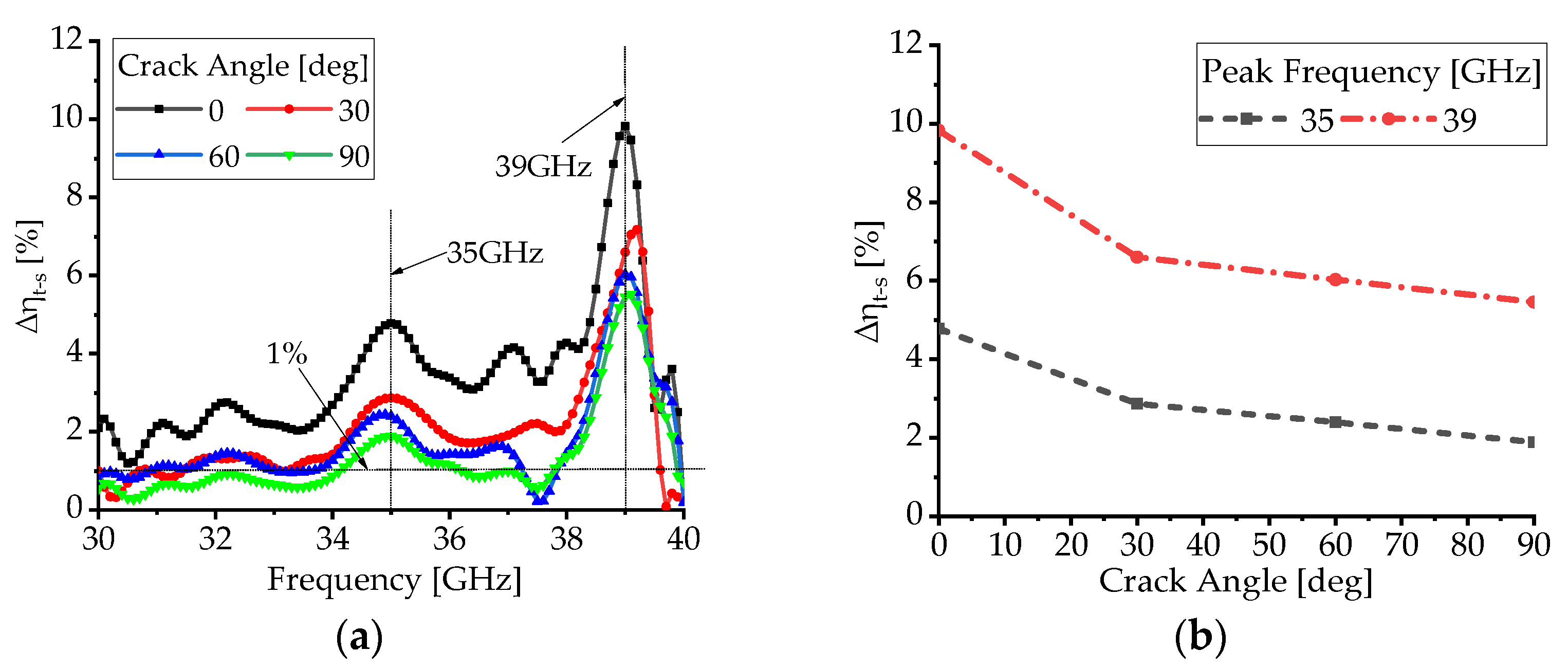

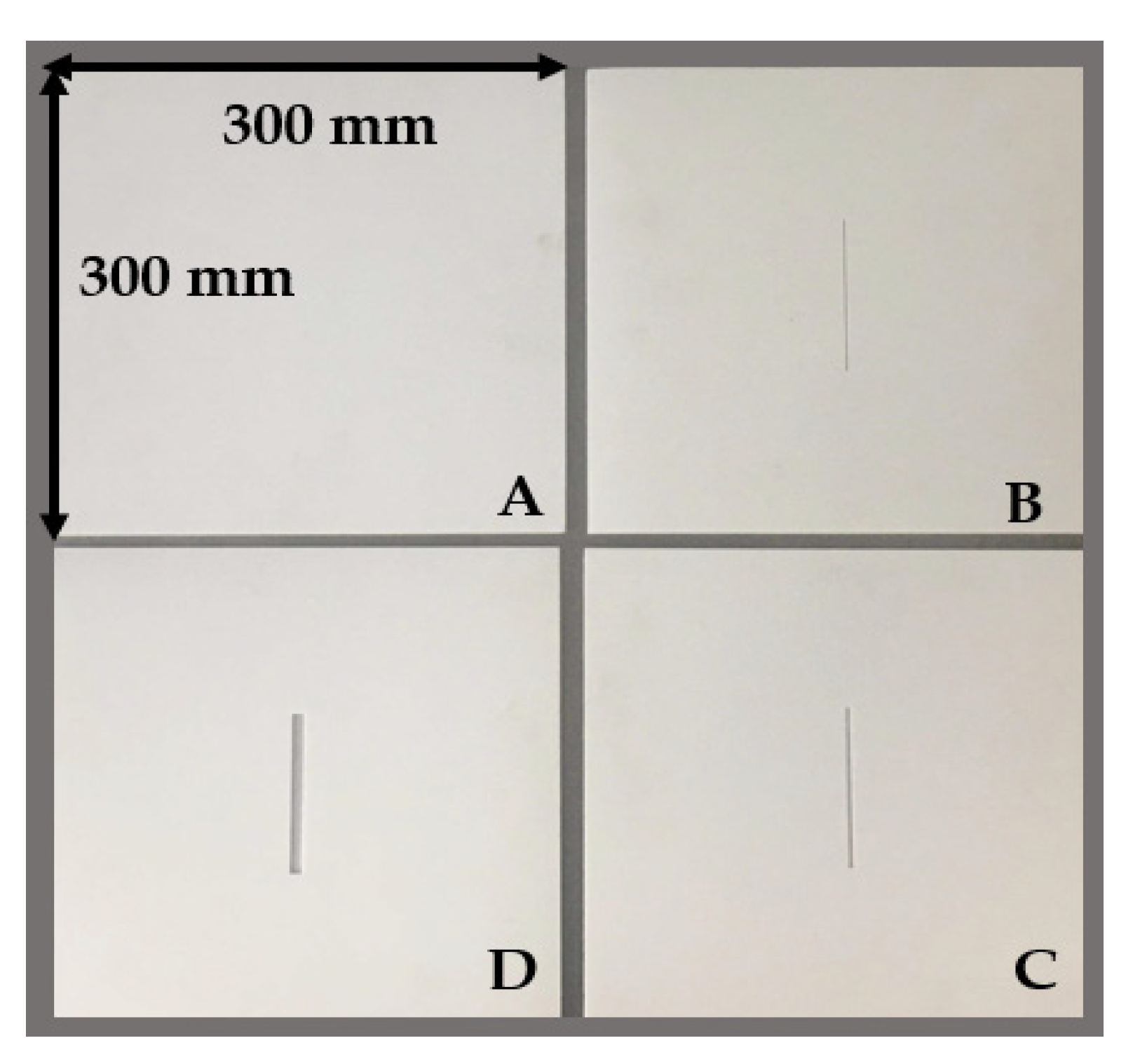
| Sample | Standard | A | B | C |
|---|---|---|---|---|
| N | 50 | 50 | 50 | 50 |
| (%) | 55.406 | 60.382 | 66.763 | 81.727 |
| SD | 0.235 | 0.206 | 0.154 | 0.280 |
| Error (%) | 0.857 | 0.624 | 0.580 | 0.797 |
| ∆ηt−s (%) | - | 4.976 | 11.357 | 26.321 |
Publisher’s Note: MDPI stays neutral with regard to jurisdictional claims in published maps and institutional affiliations. |
© 2022 by the authors. Licensee MDPI, Basel, Switzerland. This article is an open access article distributed under the terms and conditions of the Creative Commons Attribution (CC BY) license (https://creativecommons.org/licenses/by/4.0/).
Share and Cite
Chen, L.; Bi, L.; Yin, Y.; Qin, Y.; Song, M.; Wang, B.; Li, H.; Meng, L. Simplistic, Efficient, and Low-Cost Crack Detection of Dielectric Materials Based on Millimeter-Wave Interference. Electronics 2022, 11, 583. https://doi.org/10.3390/electronics11040583
Chen L, Bi L, Yin Y, Qin Y, Song M, Wang B, Li H, Meng L. Simplistic, Efficient, and Low-Cost Crack Detection of Dielectric Materials Based on Millimeter-Wave Interference. Electronics. 2022; 11(4):583. https://doi.org/10.3390/electronics11040583
Chicago/Turabian StyleChen, Liangping, Liangjie Bi, Yong Yin, Yu Qin, Minsheng Song, Bin Wang, Hailong Li, and Lin Meng. 2022. "Simplistic, Efficient, and Low-Cost Crack Detection of Dielectric Materials Based on Millimeter-Wave Interference" Electronics 11, no. 4: 583. https://doi.org/10.3390/electronics11040583
APA StyleChen, L., Bi, L., Yin, Y., Qin, Y., Song, M., Wang, B., Li, H., & Meng, L. (2022). Simplistic, Efficient, and Low-Cost Crack Detection of Dielectric Materials Based on Millimeter-Wave Interference. Electronics, 11(4), 583. https://doi.org/10.3390/electronics11040583






